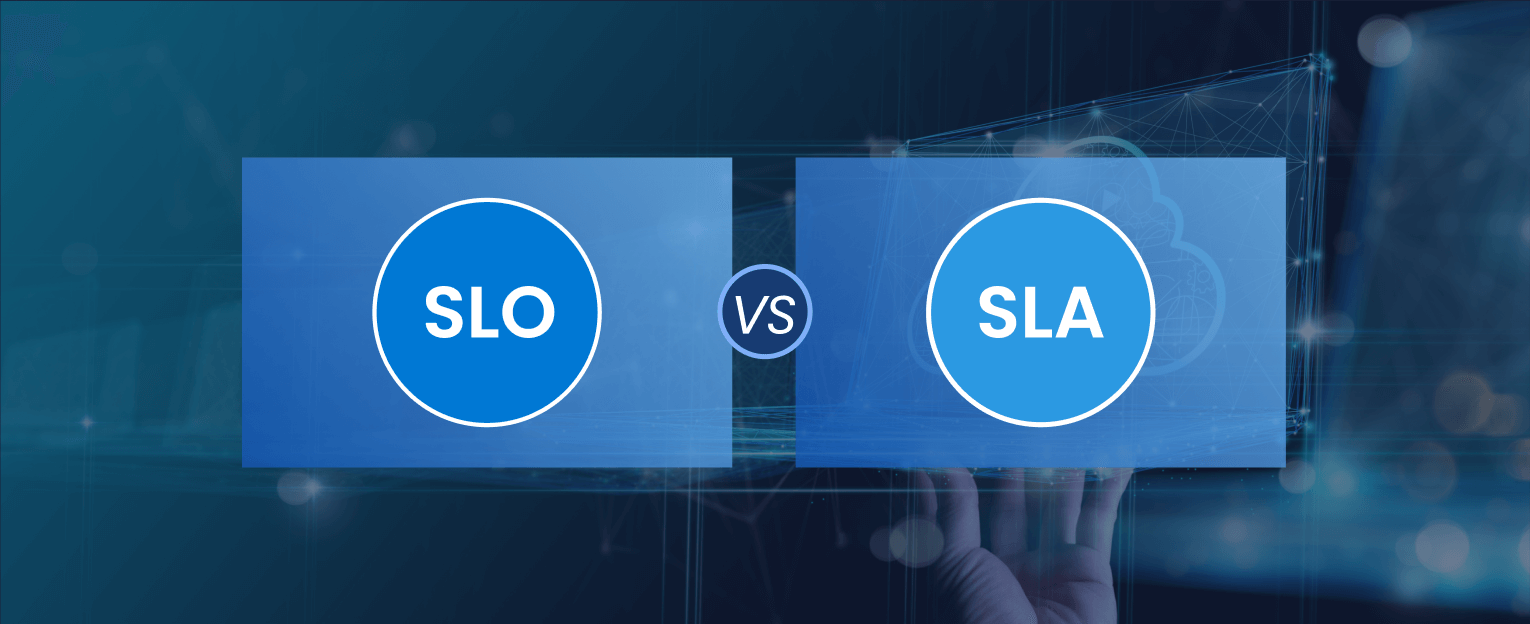Cloud migration is the process of moving your data, applications, and other digital assets from your on-premises infrastructure to a cloud-based platform. It can offer a number of benefits for businesses of all sizes, including increased agility and scalability, cost savings, improved security, and access to new technologies.
If you’re a business in Austin, Texas, and you’re considering migrating to the cloud, you’re in good company. Austin is a major hub for technology companies, and many businesses in the area are making the move to the cloud.
But with so many cloud migration providers to choose from, how do you find the best Cloud Migration Services Provider for your business? In this comprehensive guide, we’ll walk you through the process of finding the best Austin cloud migration services in 2024.
We’ll cover everything you need to know, from the benefits and costs of cloud migration to cloud migration security risks and how to mitigate them. We’ll also discuss how to choose the right cloud migration service provider for your business and how to get started with your cloud migration journey.
So, without any ado, let’s get started…
The Benefits of Cloud Migration
Embracing cloud migration offers a myriad of advantages for businesses, each contributing to the overall enhancement of operational efficiency, cost-effectiveness, and strategic positioning. Let’s delve into the diverse benefits that await businesses venturing into the cloud in 2024.
Empowering Agility and Scalability
Cloud migration is a catalyst for increased organizational agility, providing businesses with the ability to swiftly scale operations based on demand. The inherent flexibility of cloud services fosters agility in responding to dynamic market conditions, ensuring that businesses remain adaptive and resilient in the face of change.
Unlocking Significant Cost Savings
Shifting to the cloud eliminates the need for extensive physical infrastructure, leading to substantial cost savings in maintenance, hardware, and operational expenses. The cloud’s pay-as-you-go model ensures that businesses only pay for the resources they use, offering a cost-efficient alternative to traditional on-premises solutions.

Unlock Cloud Success
Elevate Your Business to the Cloud: Start Your Migration with Confidence!.
Fortifying Data Security in the Digital Realm
Modern cloud providers implement advanced security measures, ensuring robust protection against cyber threats and enhancing overall data security. By entrusting sensitive data to reputable cloud platforms, businesses can leverage cutting-edge security protocols, safeguarding their digital assets against evolving cyber threats.
Access to Cutting-Edge Technologies Without the Upfront Investment
The dynamic nature of cloud platforms ensures that businesses have access to the latest technologies without the need for substantial upfront investments. Cloud providers continually evolve their offerings, providing businesses with a competitive edge by granting access to innovative solutions and tools that drive efficiency and productivity.
Liberating Internal IT Teams from Operational Burden
By outsourcing infrastructure management to cloud providers, businesses can liberate their internal IT teams from routine operational tasks. This reduction in the IT burden allows internal teams to focus on strategic initiatives, innovation, and core business functions, thereby optimizing overall organizational efficiency.
The Costs of Cloud Migration
Well, before you embark on the journey of cloud migration or choose professional Austin Cloud Migration Services you need to have a nuanced understanding of the multifaceted costs involved. Let’s move on and see intricacies of these expenses, so you have a complete grasp of the costs associated with transitioning to the cloud.
Upfront Migration Costs
The initiation of the cloud migration journey necessitates an upfront investment, comparable to the careful planning and considerations one undertakes before embarking on a long-anticipated trip. This stage involves meticulous planning and assessment, where businesses identify specific requirements and create a roadmap tailored to their unique needs. Also, you need to include the cost of hiring Cloud Migration Service Provider, since in many cases transitioning to cloud isn’t a DIY project.
Case Studies
Growth. Enabled.

Sunburst Type To Learn

InGenius Prep

Magento Cloud Migration

Nutrition Detection App
The subsequent phase, the actual migration process, incurs costs related to the physical transfer of data, applications, and digital assets to the cloud infrastructure. This critical phase lays the foundation for a seamless transition and sets the tone for the entire migration journey, emphasizing the importance of a well-executed plan.
- Planning and Assessment: The initial phase involves a detailed analysis of existing infrastructure, determining specific business needs, and devising a comprehensive plan to ensure a smooth migration.
- Actual Migration Process: Following the planning stage, the actual migration process incurs costs related to data transfer, application migration, and the overall execution of the migration plan. These costs are pivotal for establishing a robust foundation for subsequent cloud operations.
Ongoing Cloud Computing Costs
Beyond the initial investment, businesses need to carefully consider ongoing costs to ensure sustainable and efficient operations on the cloud. This involves subscription fees, analogous to a monthly subscription, covering the usage of various cloud services and resources. Additionally, the management of data storage and internet bandwidth incurs ongoing expenses, necessitating an attentive and strategic approach to optimize resource usage effectively.
- Subscription Fees: Ongoing costs involve subscription fees for utilizing cloud services, encompassing various pricing structures based on resource usage and service levels.
- Data Storage and Bandwidth Usage: Continuous management of data storage and internet bandwidth involves ongoing expenses, requiring meticulous monitoring to ensure cost-effective resource utilization.
Training Costs
Transitioning to cloud-based systems necessitates an investment in training to ensure a smooth integration and proficiency among the workforce. Training initiatives focus on familiarizing employees with new cloud-based systems, ensuring they acquire the necessary skills for effective operation within the cloud environment. Going beyond skill acquisition, training investments aim to instill proficiency and confidence. This empowerment ensures that the workforce navigates the cloud landscape with ease and confidence, maximizing the benefits of the migration.
- Employee Training: Training initiatives encompass educational programs aimed at familiarizing employees with new cloud-based systems, ensuring they acquire the skills necessary for effective operation within the cloud environment.
- Proficiency and Confidence: Beyond skill acquisition, training investments aim to instill proficiency and confidence, empowering the workforce to navigate the cloud landscape with ease and confidence.
Security Costs
Understanding the costs associated with robust security measures is vital for safeguarding sensitive data. Security costs encompass investments in robust measures such as encryption, access control, and monitoring, serving as a proactive defense against potential threats. Recognizing security as a non-negotiable investment underscores its significance in fortifying digital assets against evolving cyber threats. This investment ensures the integrity and confidentiality of sensitive data throughout the cloud migration journey.
- Investment in Robust Security Measures: Security costs involve investments in robust measures such as encryption, access control, and monitoring to protect against potential threats.
- Non-negotiable Security Investment: Recognizing security as a non-negotiable investment underscores its significance in fortifying digital assets against evolving cyber threats. This investment ensures the integrity and confidentiality of sensitive data throughout the cloud migration journey.
Cloud Migration Security Risks
Now that you got a feel for the cost of cloud migration, another critical aspect to consider is the security risks involved with the cloud migration. Below, we will be exploring some of the pressing security risks and potential challenges that you may have to face during the cloud migration process:
Data Breaches:
The risk of unauthorized access to sensitive data looms large as a significant concern during cloud migration. This vulnerability may arise during the migration process or be exacerbated by existing vulnerabilities within the cloud infrastructure. In fortifying digital fortresses and ensuring the integrity of data:
- Implement Robust Encryption Protocols: Employ advanced encryption protocols to protect data in transit and at rest.
- Regularize Security Audits: Conduct routine security audits to proactively identify and address potential vulnerabilities.
Compliance Violations
Traversing the intricate landscape of data protection regulations introduces an added layer of complexity during cloud migration. Non-compliance can result in severe legal repercussions and irreparable damage to an organization’s reputation. To effectively navigate regulatory challenges:
- Stay Informed About Regulatory Landscape: Keep abreast of the dynamic data protection regulations relevant to your industry.
- Establish and Implement Robust Compliance Frameworks: Develop and deploy comprehensive compliance frameworks to ensure adherence.
Account Hijackings
The vulnerability of user accounts to security loopholes poses a tangible risk during cloud migration, potentially leading to data breaches and service disruptions. To safeguard access points effectively:
- Enhance Authentication Mechanisms: Implement multi-factor authentication as an added layer of security.
- Regularly Update Security Protocols: Maintain a proactive stance by regularly updating and reinforcing security protocols.
Denial-of-Service Attacks
Cloud services, with their expansive infrastructure, may become prime targets for disruptive attacks, particularly Denial-of-Service (DoS) attacks. These attacks aim to overwhelm and disrupt cloud services, thereby impacting business operations and user accessibility. To fortify digital resilience against such attacks:
- Deploy Distributed Denial-of-Service (DDoS) Protection: Integrate DDoS protection services to effectively mitigate potential attacks.
- Implement Cloud Redundancy: Utilize redundant cloud services to ensure business continuity in the face of an attack.
Insider Threats
The human factor introduces a nuanced dimension of potential insider threats during cloud migration. Internal personnel, whether acting intentionally or unintentionally, can pose security risks. To address insider threats:
- Implement User Monitoring Systems: Employ sophisticated user monitoring systems to detect and prevent malicious actions.
- Regular Cybersecurity Training Programs: Conduct regular cybersecurity training programs to ensure employees are well-versed in recognizing and mitigating potential risks.
How to Mitigate Cloud Migration Security Risks?
Ok, so now you know the various potential security challenges pertaining to cloud migration. But this shall not stop you to start the migration process, given the various benefit it offers. Below, we will be exploring some proved strategies that you can implement to minimize cloud migration security risks:
Choose a Cloud Provider with a Strong Track Record
Embarking on a secure migration journey begins with the careful selection of a cloud provider that acts as the bedrock for safeguarding your digital assets.
Prioritize Providers with a Proven Commitment to Security and Compliance:
Delve into providers with a track record of unwavering commitment to security and compliance. Seek alignment with industry standards and regulations, establishing a solid and trustworthy foundation for your data.
Conduct a Security Risk Assessment
Understanding the nuanced landscape of potential security threats is not just beneficial—it’s a necessity. Conducting a thorough security risk assessment before migration empowers organizations to identify, evaluate, and proactively address vulnerabilities.
Evaluate Potential Risks Before Migration:
Take a meticulous approach to assess specific risks tied to your business environment. Identify potential vulnerabilities in your existing infrastructure, applications, and data, laying the groundwork for targeted and effective risk mitigation.
Implement Strategies to Mitigate Identified Risks:
Tailor your strategies based on the outcomes of your security risk assessment. Strengthen access controls, fortify encryption protocols, and address vulnerabilities in your current IT landscape to enhance overall security.
Implement Robust Security Measures
Proactively fortifying your digital fortress is the cornerstone for safeguarding digital assets throughout the entire migration process.
Utilize Encryption, Access Control, and Continuous Monitoring:
Embrace advanced security measures, incorporating encryption for data confidentiality, access control to restrict unauthorized access, and continuous monitoring for real-time threat insights. These collective measures fortify your digital environment against potential security threats.
Regularly Review and Update Security Posture
In the dynamic and ever-evolving realm of cybersecurity, staying ahead requires a commitment to continuous improvement. Regularly reviewing and updating your security posture ensures ongoing protection against emerging threats.
Stay Proactive by Consistently Assessing:
Maintain a proactive stance by consistently assessing your security posture. Regular reviews of security protocols, policies, and technologies help identify areas for improvement and potential vulnerabilities.
Enhance Your Security Posture Through Regular Updates:
Acknowledge that security is a dynamic field. Regular updates are not just encouraged; they are necessary. Stay current with the latest industry standards and emerging threats by regularly updating your security measures. This commitment to continuous improvement builds a resilient defense against the ever-evolving landscape of security challenges.
How to Choose the Right Cloud Migration Provider for Your Business?
Well, now that you know how to mitigate security risks involved with the cloud migration process, let’s move on and see how you can choose the right Austin Cloud Migration Services for your business needs. Below, we will be looking at some of the pressing aspects you need to consider when looking to hire professional Austin Cloud Migration Services.
Consider Your Business Needs
At the heart of your cloud migration partner selection lies a deep understanding of your business needs. It’s more than just ticking boxes; it’s about pinpointing specific requirements and objectives that seamlessly align with your broader business goals. Delve into your current infrastructure, assess future scalability needs, and define your desired outcomes. This sets the stage for finding a partner not only versed in but anticipating your unique business needs.
- Understand your current infrastructure and its limitations.
- Identify future scalability needs for a seamless transition.
- Define clear objectives to align with your broader business goals.
Evaluate Services Offered
The landscape of cloud migration services is vast, and finding the right partner involves a thorough evaluation of their offerings. It’s not merely about ticking off a checklist but understanding the depth and breadth of what they bring to the table. Seek a holistic approach—from initial assessment and strategic planning to the actual migration process and continuous post-migration support. Look for a partner that acts as a strategic collaborator, guiding you through every phase of your migration journey.
- Ensure the partner covers the full spectrum, from assessment to ongoing support.
- Look for a strategic collaborator rather than just a service provider.
- Evaluate their expertise in each phase of the migration process.
Compare Pricing and Terms
Understanding the financial side of the partnership is about more than just costs—it’s about making an informed and sustainable decision. Dive into the intricacies of pricing structures and terms of service. Consider not only the immediate migration costs but also the long-term implications. Seek transparency and clarity in the pricing model, ensuring it aligns with your budget constraints and provides lasting value beyond the initial migration phase.
- Scrutinize pricing structures to ensure alignment with your budget.
- Consider long-term implications beyond the initial migration.
- Seek transparency and clarity to avoid hidden costs.
Read Reviews
In the digital landscape, a provider’s reputation speaks volumes. Reading reviews and testimonials isn’t just a formality; it’s an insightful journey into the provider’s track record and client satisfaction. Go beyond the surface—delve into reviews from businesses with similar needs. Understand their experiences, challenges, and the level of satisfaction with the provider. This step isn’t just about gathering information; it’s about gaining a nuanced understanding of how the provider has performed in real-world scenarios, offering a glimpse into what your partnership might entail.
- Read reviews from businesses with similar needs for relevant insights.
- Understand the provider’s performance in real-world scenarios.
- Gauge client satisfaction and identify potential challenges.

Unlock Cloud Success
Elevate Your Business to the Cloud: Start Your Migration with Confidence!.
Why Folio3 is the Best Choice for Your Austin Cloud Migration Needs
When it comes to Austin Cloud Migration Services, experience is everything. Folio3 has over 10 years of experience in migrating businesses of all sizes to the cloud. As a leading Cloud Migration Service Provider. our team of certified and experienced cloud migration professionals has a proven track record of success, and we’re committed to helping you make a smooth and seamless transition to the cloud.
We offer a wide range of cloud migration services, including assessment, planning, migration, and support. We’ll work with you to develop a custom cloud migration plan that meets your specific needs and budget, and we’ll be there to support you throughout the entire migration process.
But what really sets Folio3 apart as the preferred Austin Cloud Migration Services partner is our commitment to customer satisfaction. We’re dedicated to providing our customers with the best possible cloud migration experience, and we’ll go above and beyond to ensure that you’re happy with the results.
Here are just a few of the reasons why Folio3 is the best choice for your Austin cloud migration services needs:
- We’re experts in cloud migration. With over 10 years of experience, we’ve seen it all when it comes to cloud migration. We know how to avoid the pitfalls and get the job done right.
- We’re certified and experienced. Our team of cloud migration professionals is certified by the leading cloud providers, such as AWS, Azure, and Google Cloud Platform. We have the skills and experience to migrate your applications and data to the cloud securely and efficiently.
- We offer a wide range of services. We can help you with every aspect of your cloud migration, from assessment and planning to migration and support. We’re a one-stop shop for all of your cloud migration needs.
- We’re committed to customer satisfaction. We believe that the best way to build a successful business is to provide our customers with the best possible experience. We’re dedicated to helping you achieve your cloud migration goals and objectives.
If you’re a business in Austin, Texas, and you’re considering migrating to the cloud, Folio3 is the best choice for you. We’ll help you make a smooth and seamless transition to the cloud, and we’ll be there to support you throughout the entire process.
Conclusion
In the dynamic business landscape of Austin, the right cloud migration partner can make all the difference. As you embark on your cloud migration journey, carefully consider the benefits, costs, security risks, and best practices outlined in this guide. When choosing a cloud migration service provider, look no further than Folio3. With a proven track record, a team of experts, and a commitment to customer satisfaction, Folio3 stands as the best choice for your Austin cloud migration needs.

























